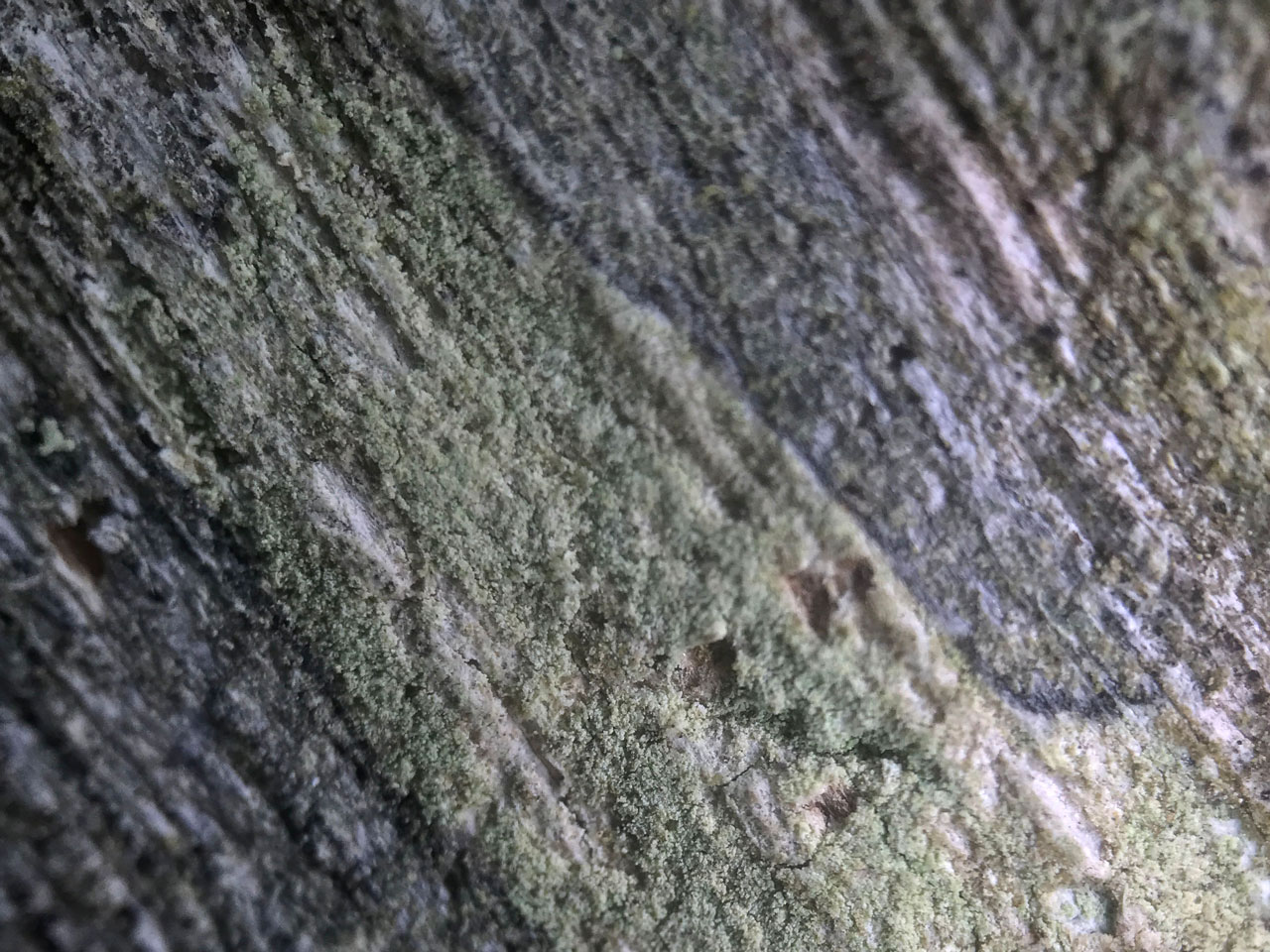Lecanora stanislai
This little known lichen is easily overlooked as Lecanora expallens, but is C– and K/UV (wet)–. It is closely related to L. compallens, but the thallus is very thin and in most cases completely endosubstratal in non-sorediate parts. Best confirmed by sequencing in new locations. So far only known from a from a single old growth woodland in the New Forest, but probably to be found elsewhere.
Thallus sorediate, indeterminate, very thin and in most cases completely endosubstratal in non-sorediate parts, rarely with small (ca 0.05 mm) convex green or blue-green areoles soon bursting to form soredia; prothallus often dark brown to almost black, sometimes indistinct; soralia yellow-green to grey-green, sometimes with a distinct bluish tinge, becoming effuse and forming a ± continuous layer over thalli; soredia simple, in older specimens covered with colourless crystals of zeorin, round, to 35 μm diam., rarely in irregular consoredia to 50 μm diam.; soredial wall well-developed but not complete, without distinct projecting hyphae. Apothecia and conidiomata unknown.
A member of the L. symmicta group, a candidate for segregation into the genus Zeora Fr. (Ivanovich et al., in prep.). L. compallens forms a distinct grey thallus and at least partly delimited soralia without a bluish tinge. Lecanora expallens with low concentration of xanthones (usually from shady sites) can be indistinguishable from L. stanislai without molecular methods, but it typically shows a K/UV (wet)+ bright yellow-green fluorescence that is absent in L. stanislai. Sterile thalli of Fellhanera bouteillei have a similar bluish tinge, but usually also typical pycnidia and sometimes produce asemone. More information can be found in Guzow-Krzemińska et al. (2017).
Recently reported from Hampshire (New Forest), where it was confirmed by sequencing. The first British record was from the bark of a younger Beech tree in old-growth Sessile Oak pasture woodland, which matches its central European habitat where it is mainly found on the smooth bark of deciduous trees in well preserved woods, often old growth stands. Similar material was later found nearby on hard dry lignum on a long fallen Oak; smooth dry lignum is also a subsidiary habitat in central Europe.

Recorded from a single old growth woodland in the New Forest, but probably to be found elsewhere.
So far known only from a single old growth woodland and easy to overlook, but confined to undisturbed habitat elsewhere in Europe. Not assessed but best regarded as Data Deficient, in that it could either be Threatened or Least Concern.
Cannon, P., Malíček, J., Ivanovich, C., Printzen, C., Aptroot, A., Coppins, B., Sanderson, N., Simkin, J. & Yahr, R. (2022). Lecanorales: Lecanoraceae, including the genera Ameliella, Bryonora, Carbonea, Claurouxia, Clauzadeana, Glaucomaria, Japewia, Japewiella, Lecanora, Lecidella, Miriquidica, Myriolecis, Palicella, Protoparmeliopsis, Pyrrhospora and Traponora. Revisions of British and Irish Lichens 25: 1-83.
Guzow-Krzemińska, B., Łubek, A., Maliček, J., Tønsberg, T., Oset, M. & Kukwa, M. (2017). Lecanora stanislai, a new, sterile, usnic acid containing lichen species from Eurasia and North America. Phytotaxa 329: 201–211.
Text by Neil A Sanderson based on Cannon et al (2022)
